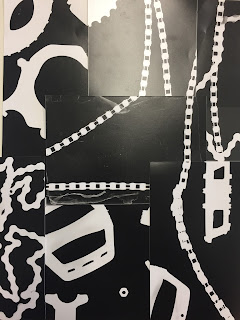Ux design practice is paving the way for users to interact with a product. The scale ranges from providing complete freedom to making all decisions for them. The issue with making all decisions for them is that this happens without the users know. 'As a part of our daily routine, user experience designers “hack” into the thought patterns of their users.' something not everyone would be aware of, Social media sites in particular do this by creating addictive habits for us.
'I would define an ethical challenge as the moment when the line of making seemingly-motiveless decisions that serve the interests of the system over those of the user, is crossed.'
The positive thing however is it is becoming much more difficult for ux designers to take advantage of users because we can now all be a critique with the help of reviews. Companys are beginning to recognise this and are thinking about designing more for the user rather than the product. 'users today have a developed sense of critique. They voluntarily leave reviews in app stores, use stars to rate, invest time in conversations about the product/service, etc.' - Yonatan
On one hand, multiple options = freedom to act
On the other hand, limiting the user = preventing errors
An interesting example used is google docs autosave feature which there is virtually no downside to and most users would appreciate the features. Where as apps saying your card details automatically for your next purchase without asking could in fact be controversial. And is more beneficial to the company than it is to the user.
Newsletter registration: It is quite obvious that whoever builds a registration form is interested that users would sign up. On the other hand, as users ourselves, most of us can attest the problems in newsletters. You have been participating in a conversation online, and the next thing you know, you are getting a newsletter, ads and notifications of new posts without explicitly opting. So, should we pre-check opt-in checkboxes or not?
Social networks: If we think of Facebook’s default settings for a moment, when commenting, unless set otherwise, you will be notified of every new comment. It is true that it is useful (to keep track of the conversation), but there is no ignoring the fact that Facebook benefits from you returning over and over to check your notifications. The fear of missing out (or being left out, in this case) can become addicting eventually. I am quite certain that they have considered the number of notifications to walk the fine line between being informative and wasting time. - This confirms research i have gathered from other posts.
A recent feature has been introduced on Facebook. Besides (not instead) the notifications we are used to seeing, comments on someone’s wall post pop up in a seemingly “chat window”, next to the “regular” chats. For example, if I have congratulated someone, and they thanked me, it pops in the form of a conversation window, encouraging me to keep the conversation going (take note – publicly). For Facebook, it is close to a magical feature. A small change in a familiar pattern, yet one that increases user engagement. You are used to seeing private chats appear this way, so the primary instinct would be to divert attention there and keep on chatting.
There is no debate over the fact that if you want any product to survive, one major long-term goal is always to make the users come back and act over and over again. That being said, users who feel burdened by distractions demanded by less-important visuals would probably be irritated when being forced to divert their attention. - This last paragraph is important to consider and for social media companys to take into account



































